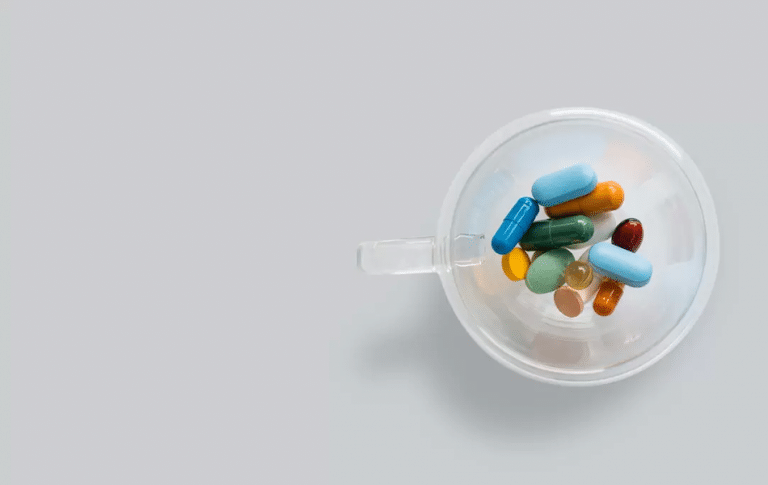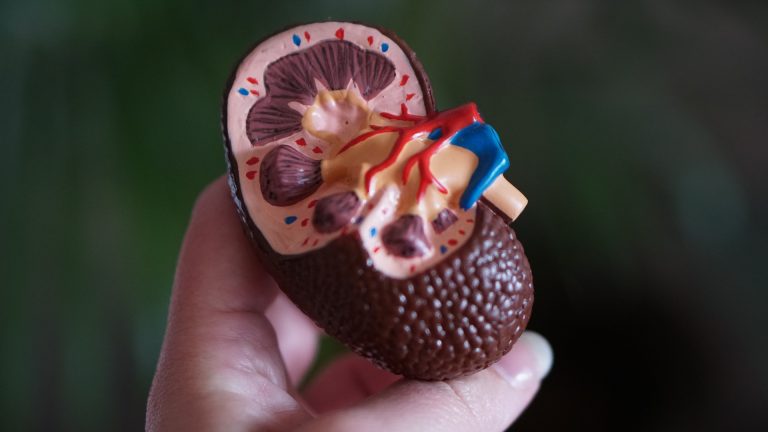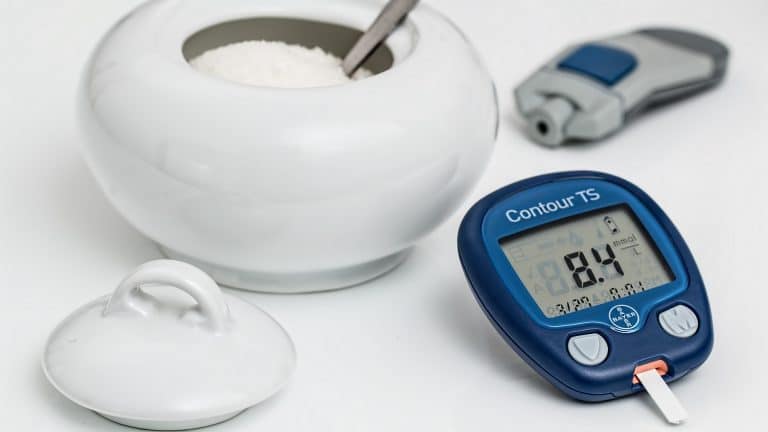33 Captivating CBD Statistics & Facts for a Revitalizing 2024

CBD statistics show that there isn’t much CBD can’t help you with. Cannabidiol is a good fit for many—from reducing seizures and chronic pain to being a component in beauty products and pet food.
But how much do you really know about CBD and its effects? Check out these interesting stats and facts to learn more about the cannabinoid taking the world by storm.
Ten Must-Know CBD Statistics for 2024
- There is only one FDA-approved, CBD-derived product for sale in the US.
- As many as 57% of Americans think CBD will show up on a drug test.
- CBD statistics reveal that 24% of pet owners use CBD products for themselves, their pets, or both.
- An astounding 79% of respondents in a survey said they are using, have used, or are considering using CBD for arthritis pain.
- States where medical marijuana is legal saw a 20% drop in specific opioids prescriptions.
- Epidiolex, the FDA‑approved prescription cannabidiol, reduced the number of seizures by 39% to 51%.
- CBD market projections up to 2025 show the hemp-derived segment will increase by 41.5%.
- The CBD food and beverages market will reach $5.9 billion by 2024.
- CBD oil sales have drastically increased since the start of the coronavirus pandemic, CBD trends tell us.
- Almost half of CBD consumers choose oils, lotions, and gummies as the preferred method of delivery.
A Few Introductory CBD Facts
Before we get into market trends and CBD benefits, let’s go through some basic data on cannabidiol.
1. CBD is just one of 113 known cannabis compounds.
(Michigan Supply & Provisions)
What is CBD? CBD, or cannabidiol, is one of the many naturally-occurring components of the cannabis plant. Even though it has many of the same healing properties as THC, the other most popular cannabinoid, it doesn’t produce the same effects. Most notably, CBD doesn’t share the psychoactive properties of THC.
2. Hemp-derived CBD is legal in all 50 states, facts on CBD legal states in 2022 reveal.
(Plant People)
CBD derived from hemp that doesn’t contain more than 0.3% THC is legal on a federal level unless it’s specifically outlawed in certain states. Marijuana-derived CBD is illegal nationwide. That said, some states have legalized the recreational use of cannabis. CBD laws in 2022 can be a bit confusing, so it’s always a good idea to check state legislation before buying any CBD products.
3. Marijuana for recreational use is legal in 15 states and DC.
(Addiction Center)
During the November election, New Jersey, South Dakota, Montana, and Arizona became the newest CBD legal states in 2020. That brought up the total number of states where recreational marijuana is legal to 15.
4. There is only one FDA-approved, CBD-derived product for sale in the US.
(FDA)
Epidiolex is the only CBD product that is approved by the FDA. This is a prescription drug for the treatment of two severe forms of childhood epilepsy. Currently, it is illegal to market CBD beauty products, foods, or beverages as dietary supplements. What’s more, it is illegal to make any therapeutic claims about these products.
5. The latest CBD industry statistics show that 68% of Americans favor cannabis legalization.
(Gallup)
According to Gallup’s 2020 survey, Americans support marijuana legalization now more than ever before. In fact, this was the highest percentage of supporters recorded since 1969. That is when the analytics company first started measuring the public’s take on cannabis use. By doing so, Gallup introduced essential data for most CBD statistics.
6. As many as 57% of Americans think CBD will show up on a drug test.
(SingleCare)
What’s more, 47% think that the government controls cannabidiol. These misconceptions often stop people from using CBD. When asked why they hadn’t tried CBD, 8% of respondents cited concerns that CBD would get them high, while 22% didn’t believe it would be effective.
CBD User Demographics
What is the market for existing companies and newcomers in the CBD industry? Who uses CBD and why? What does the average CBD consumer look like?
Read on to find out.
[visualizer id=”98200″]
7. At least 33% of the US population has tried CBD products, CBD usage statistics show.
(SingleCare) (Gallup)
According to a 2020 survey, at least one-third of respondents are using or have used cannabidiol products. CBD popularity seems to be growing rapidly. A poll conducted just one year earlier showed a much smaller percentage of users — in 2019, only 14% of Americans said they were using CBD.
8. The average image of a cannabis user is changing, and so is the CBD target market.
(BDS Analytics)
These days, we are finally seeing less and less stigma surrounding the use of marijuana. Interestingly, today’s CBD consumers are around 40. What’s more, most of the users tend to have a higher education degree. They are also more likely to have a full-time job than people who don’t consume CBD.
9. CBD is more popular among the younger generations.
(Gallup)
Not surprisingly, CBD consumption is more prevalent among 18- to 29-year-olds. According to CBD market analysis from 2019, 20% of adults under 30 say they use CBD.
10. However, older generations are not far behind.
(Gallup)
Nearly one in five Americans over the age of 50 have used at least one CBD product. Although not approved by the FDA, there is tons of anecdotal evidence of the efficacy of this natural remedy. It is safe to assume that it’s one of the reasons behind the increasing number of CBD users among the older age groups.
11. Women use CBD more than men.
(Seabedee)
Based on CBD trends in 2020, women seem to make up over half of all CBD users (59% vs. 40%). This survey also shows that 39% of CBD consumers are married, 44% have at least graduated from college, and 44% earn between $30,000 and $100,000 a year.
12. Interestingly, 24% of pet owners use CBD products for themselves, their pets, or both.
(Pet Food Processing)
The CBD pet industry is a growing segment of the market, with 74% of consumers being pet owners. Actually, CBD market trends show that cannabidiol-infused products for dogs and cats will account for 3% to 5% of all CBD oil sales in the US by 2025.
13. Anxiety, insomnia, and joint pain are the three most common reasons for CBD use.
(Brightfield Group)
According to a Brightfield study, 67% of users take CBD for anxiety. 60% use it to tackle insomnia, and 52% consume CBD for joint pain and inflammation relief. Other reasons include depression (43%), muscle strain (35%), migraines (34%), and chronic pain (31%).
CBD Health Facts and Stats
CBD research from 2019 shows promising results in the treatment of neurological conditions. Those conditions include multiple sclerosis, Parkinson’s disease, as well as mental disorders. Now, most studies provide encouraging findings. However, we need more research to justify the effectiveness of CBD as a treatment for these conditions.
14. CBD can reduce pain levels.
(NCCIH)
One 2018 review covered 47 studies on the use of cannabis for chronic pain alleviation. The review discovered that cannabis users experienced a 30% reduction in pain compared to 26% who were taking a placebo. Although the difference was too small to be significant, these CBD statistics are a ray of hope to people with chronic pain. They believe that someday this cannabinoid could get approval as an effective pain remedy.
15. 79% of those surveyed said they have used or are considering using CBD for arthritis pain.
(The Arthritis Foundation)
There is an overwhelming number of people turning to cannabidiol to manage their arthritis pain. This, combined with a lack of proper education on dosing and safety, has prompted the Arthritis Foundation to act. It issued CBD guidelines for the 54 million people affected by this condition in the US.
16. CBD facts show that cannabis reduces anxiety levels.
(MedicalNewsToday)
In one experiment, speakers received an oral dose of 300 mg of CBD 90 minutes before a public speaking test. They then reported that cannabidiol significantly reduced their anxiety levels. Another 2020 study provided evidence that CBD could be used on its own or as part of complementary therapy. Following this, we can use CBD to treat generalized anxiety disorder, social anxiety disorder, and PTSD.
17. CBD can reduce resting blood pressure by 6mmHg, CBD health statistics reveal.
(NCBI)
A controlled study found out that CBD use could lower resting BP. It was especially evident before and after the subject was introduced to high-stress levels. However, the study concluded that we need more research. In other words, we need more evidence to justify the role of cannabidiol in the treatment of cardiovascular disorders.
18. CBD benefits migraine sufferers — it can reduce pain by 55%.
(Green Entrepreneur)
A 2016 study of migraine and severe cluster headache patients found that participants who were given a high CBD/low THC dose reported 55% less pain. On top of that, patients also reported a decrease in headache frequency compared to the group who took an antidepressant.
19. CBD research from 2019 indicates that Epidiolex reduced the number of seizures by 39% to 51%.
(Dravet Syndrome News) (GW Pharmaceuticals)
This FDA‑approved prescription cannabidiol also reduces the number of convulsive seizures by 38% to 44%. A study of Dravet and LGS patients documented the results. Note that both Dravet and LGS are severe and difficult to treat forms of childhood epilepsy. Thankfully, the clinical trials led to the approval of the drug by the FDA. The European Commission and the UK National Institute for Health and Care Excellence (NICE) approved the drug as well.
20. As many as 80% of children diagnosed with ADS saw a decrease in problematic behavior after using CBD.
(Leafy)
CBD oil facts reveal that this cannabinoid is beneficial to children with autism. One study involved 60 children with autism. The participants were administered a highly concentrated cannabidiol oil. As a result, over half of them improved communication. Besides, 62% said they noticed great improvements after applying the oil for at least seven months.
21. States where medical marijuana is legal witnessed a 20% drop in specific opioids prescriptions.
(LWW Journals) (CDC)
State medical cannabis laws link to a considerable drop in opioid prescriptions. More specifically, a 19.7% reduction of daily doses. Opioid prescriptions and abuse have been of national concern for years now. They were involved in 46,802 overdose deaths in 2018, or almost 70% of all drug overdose deaths that year.
CBD Industry Stats and Facts
Last but not least, we’ll explore the market value of the industry. We’ll also discover which segments are the biggest, most important, and fastest-growing. Let’s get started.
[visualizer id=”98198″]
22. The global CBD pet market was valued at $27.7 million in 2019.
(Grand View Research) (Statista)
Thanks to the growing awareness among pet owners, this segment of the market is forecast to grow at a CAGR of 40.3% from 2020 to 2027. Data also show treats and chews as the most popular, with 48% of US owners saying that they’ve bought these products for their pets.
23. The global CBD market was valued at $967.2 million, 2020 CBD market statistics show.
(GlobeNewswire)
Projections for 2020 and beyond are looking good for the CBD oil industry. The global market is expected to grow at an annual rate of 40.4% or reach $5.3 billion by 2025. This fantastic growth rate is primarily fueled by a boost in research funding and the legalization of CBD in several US states. What’s more, there’s an increasing number of chronic conditions and diseases that ask for this natural remedy.
24. CBD market projections for up to 2025 show the hemp-derived segment will increase by 41.5%.
(GlobeNewswire)
In other words, sales of hemp-derived CBD products are expected to go up from $516.3 million in 2020 to $2.9 billion by 2025. Hemp-derived CBD is the largest segment of the CBD industry. These products are used in the pharmaceutical, food, and cosmetic industry, which account for the biggest share of the market.
25. The global CBD nutraceutical market will reach $17.4 billion by 2026, based on CBD growth projections.
(PR Newswire)
Expected to grow at a rate of 18.8%, the supplements market is one of the largest segments of the industry. In the coming period, CBD online sales of nutraceuticals will see the biggest growth. That is because companies see the online distribution channel as the fastest and most efficient way to reach their customers. That is especially true in the light of the pandemic.
26. CBD makes up for 10% of the $10 billion global skincare market, CBD market data suggests.
(Mugglehead.com)
Research predicts that the CBD skincare market will go up to $959 million by 2024 or make up 10% of the entire global beauty industry. These numbers should come as no surprise given the rising popularity of CBD-infused cosmetic products. Perhaps, the items that have been hitting shelves the most are anti-acne creams and revitalizing CBD body lotions.
27. The CBD food and beverages market will reach $5.9 billion by 2024.
(Natural Products Insider)
Going up from $906 million in 2019, the cannabidiol-infused drinks and food market is expected to reach a whopping $5.9 billion in five years. The impending FDA regulation of popular products, such as CBD-infused coffee, drives the CBD industry growth.
28. CBD oil sales have increased since the start of the coronavirus pandemic, the CBD trends tell us.
(PR Newswire)
As the pandemic spread across the US, cannabis sales skyrocketed in several regions. CBD sales in California rose by almost 160%. In the meantime, cannabis sales went up by 100% in Washington and 46% in Colorado compared to 2019, CBD sales statistics reveal.
29. Most CBD products are bought from cannabis dispensaries.
(SingleCare)
40% of CBD consumers say that a cannabis dispensary is their go-to shop for CBD products. Second are retail stores, with 34% of consumers shopping there, whereas 27% go for the online channel.
30. 26% of cannabis users spend $101–$200 on CBD products every month, CBD market trends show.
(Statista) (SingleCare)
On the other hand, 24% of consumers spend less than $20 a month on cannabis products. Another survey from the Brightfield Group in 2019 indicates that 44% of users spend $20 to $80 on CBD a month. That said, 13% pay over $160 a month to meet their CBD needs.
31. Almost half of CBD consumers prefer cannabidiol oils, lotions, and gummies.
(SingleCare)
That said, there is a possibility for more CBD growth in 2020. A recent survey revealed that 18% of respondents are interested in CBD capsules and softgels. What’s more, 13% show an interest in vaping products, and 9% would try CBD bath bombs and salts.
32. There are at least 25 CBD oil direct sales companies on the market.
(Business Wire) (Direct Selling News)
A growing retail channel, direct selling companies, or network marketing companies use a network of CBD sales representatives for their products instead of the traditional retail distribution chain. According to CBD industry facts, Kannaway was the first company to offer CBD direct sales.
A relatively young company, Kannaway focuses on marketing CBD oil via direct sales. The enterprise also offers a range of other hemp-based products. In 2020, Kannaway was listed among the Top 100 MLM companies and the Most Popular CBD MLM Company by HelathMJ.
33. Organigram Holdings, Harvest Health & Recreation, and Amyris were the three hottest CBD stocks in 2020.
(Investopedia)
The first two are Canadian companies. The former deals in the production of medical marijuana. The latter specializes in the cultivation of both recreational and medical cannabis. Amyris produces and distributes chemical CBD products, such as pharmaceuticals, cosmetics, and fragrances.
The marijuana stock market has never been stable. However, with impending news of US legalization and more and more countries across the world decriminalizing or legalizing CBD, stock values are only expected to go up.
Bottom Line
As CBD industry trends and statistics demonstrate, products containing cannabidiol are everywhere. People of every age, race, and gender use them. The CBD market is expanding and bringing in considerable revenue. We’re seeing constant innovation in this area, from food and beverages to cosmetics and medicine. As people today are becoming more conscious of healthy lifestyles, the rising CBD trend will only get bigger.
Now, our team would love to invite you to discover the fascinating world of CBD with our expert reviews of the best CBD vape oil, CBD bath bombs, CBD coffee, CBD lotions, CBD vape pen, and much more. Time to make CBD shopping endeavors pleasant.
FAQs
What drugs should not be taken with CBD?
Even though CBD is generally safe and has little to no side effects. That said, there are possible interactions with certain medications. To avoid them, look for the grapefruit warning. Typically, drugs and medications, such as blood thinners, that have adverse effects when taken with grapefruit juice might also display negative effects when consumed with CBD.
What does CBD do to the brain?
CBD, and other cannabinoids, react with the body’s endocannabinoid system. That is the system responsible for various functions, including sleep, mood, appetite, pain, and immune response. By interacting with the endocannabinoid receptors in the brain, CBD can reduce inflammation and anxiety levels. What’s more, it can decrease some of the effects of THC, such as euphoria and short-term memory loss.
How long has CBD been around?
Cannabis has been around for thousands of years, dating back to 2737 BC in China, when it was used to treat malaria, rheumatism, and gout. CBD was actually discovered in 1942 by an American chemist Roger Adams. Its popularity grew over the years resulting in California becoming the first state to legalize medical marijuana in the US to the passing of the Farm Bill in 2018, which legalized hemp-derived CBD on a federal level.
Who uses CBD the most?
18- to 29-years olds are the age group most likely to consistently use CBD, as well as the generation that has the most experience in CBD consumption. According to the latest CBD statistics, 20% of adults under 30 use CBD and 40% have tried it at least once.






